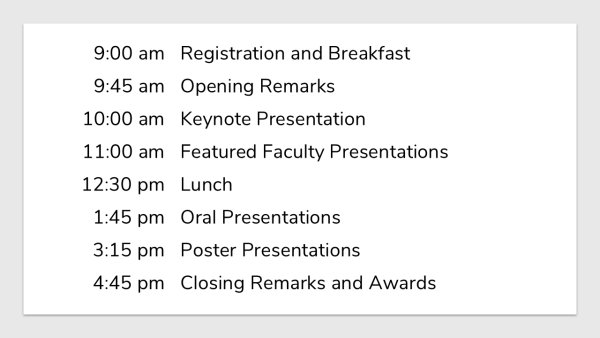Research Day
Research Day is an annual celebration of the innovative research conducted at CCBBI. The event showcases presentations from CCBBI faculty, staff, and trainees, highlighting the breadth and depth of ongoing scientific work.
Research Day 2025 will be held on Thursday, December 11 in the Cartoon Room at the Ohio Union.
Abstracts for all talks and poster presentations can be found in the program book.
Schedule of Events

